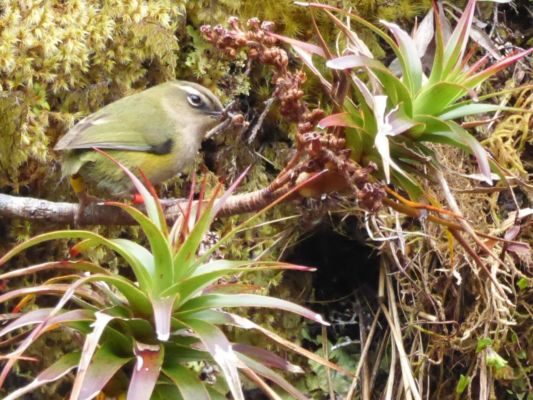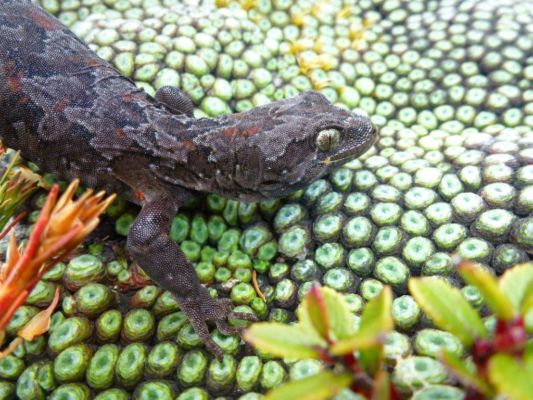What do we know about the effects of introduced mammalian predators in the alpine environment? The short answer is probably ‘not much’. DOC scientists Colin O’Donnell, Kerry Weston and Joanne Monks review the little that we do know in the latest volume of the NZ Journal of Ecology.
They identify important gaps in our knowledge and make recommendations for future research.

According to the researchers, alpine zones account for around 11% of our landmass – a significant portion of our environment and, like other alpine zones around the world, are threatened by invasive species, hunting, habitat loss and climate change. Of these threats, the researchers identify the potential impacts of introduced mammalian predators as being the least understood pressure our alpine ecosystems face.

“The impacts of introduced mammalian predators are well described in many New Zealand ecosystems, though little is known about the impacts of these predators on alpine fauna… Most evidence for predation is anecdotal or comes from studies of species with wider ranges and at lower altitudes. Nevertheless, at least ten introduced predator species have been confirmed as frequent predators of native alpine species, particularly among birds and invertebrates. In the case of the endangered takahe and rock wren, stoats are primary predators, which are likely to be impacting significantly on population viability. We also document records of mammalian predation on alpine lizards and freshwater fish.”
The alpine community includes invertebrates such as alpine weta, skinks and geckos (new species of which are still being discovered), fish and birds. Many of these species live only in the alpine zone and have adapted in specialized ways to survive in this environment. Large size, differences in blood haemoglobin, greater longevity and even the ability to survive freezing (as seen in our alpine weta) are some of the ways organisms cope with cold temperatures, low food availability, a short breeding season and associated low reproduction rates. That short breeding season and low fecundity also makes populations of alpine organisms particularly vulnerable to predation.
“We record 24 indigenous bird species as characteristic of the alpine bird community, of which 17 are threatened or at risk… Only three species are obligate users of the alpine zone (i.e. restricted to it for at least part of their life history): Hutton’s shearwaters, takahē and rock wrens… A popular misconception is that kea use only alpine habitat, perhaps the result of their common description as ‘the world’s only alpine parrot’. While alpine areas constitute an important component of kea habitat, kea are sequential foraging specialists, commonly found in coastal and montane forests and moving among numerous seasonally available food sources.”
Lizards – both skinks and geckos – are also found throughout the alpine zone, with some species little understood and believed to be found only in very localized ranges.
“Alpine areas of New Zealand have a diverse lizard fauna, with at least 13 gecko and 17 skink species recorded. However, populations are generally poorly surveyed and understood. Distributions of most taxa appear highly localised, and like many other reptile taxa in New Zealand, are probably relicts of former, more widespread distributions. About one quarter of alpine lizards may be obligate alpine species… Lizards may play an important role as pollinators, being more local dispersal agents for alpine plants, though little is known in general of their effectiveness (quantity and quality) for most New Zealand flora.”

A surprising number and variety of invertebrates are also alpine inhabitants.
“The New Zealand alpine zone supports a rich and extensive array of endemic invertebrate groups; some of the most notable include wētā and short-horned grasshoppers, cockroaches, cicadas, weevils, butterflies and moths, giant wingless stoneflies, spiders and giant carnivorous snails. Many of these taxa possess specialised adaptations to survive the extreme alpine conditions such as dark colouration, flightlessness and freeze tolerance.”
And fish? A small number are found in the alpine zone, but none are known to live there exclusively.
“Eight of the 56 New Zealand indigenous freshwater fish taxa have been recorded in the alpine zone, but none are obligate alpine species.”
When it comes to introduced mammalian predators, it seems they can all be found in the alpine zone, at least at some times of the year – but little research has been done on their presence or impact.
“Studies documenting mammalian predator ecology above the timberline are sparse and distribution records are not formally collated anywhere. Trap catch data collated from several alpine sites, combined with anecdotal records from managed alpine sites, show that almost the full suite of predators known to be present below the timberline are also present in the alpine zone… While the precise impacts on the long-term viability of threatened species have not been evaluated, anecdotal evidence suggests that predation by mammals is a serious threat, warranting predator control.”
Stoats, in particular, are well suited to an alpine lifestyle.
“Stoats are widespread throughout New Zealand and are able to live in any habitat where they can find prey. Both trapping and tracking tunnel studies indicate stoats are common in alpine area, which is not surprising given that they are cold-adapted animals with the majority of their global range lying north of latitude 45° and associated with boreal and subalpine biomes.”
In alpine habitats, stoats have been identified as frequent predators of rock wren eggs, nestlings and nesting adults. But mice and birds are not their only prey.
According to the authors, previous research (1978) has found that “in montane to alpine areas of the Murchison Mountains, ground wētā were common in the scats of stoats (55% of samples)”. At the same sites, in 2005, another research project confirmed that “ground wētā were an important dietary component, comprising up to 59% of stoat stomachs.”
The authors, not surprisingly, recommend future research on mammalian predators and their impact in this unique ecosystem.
“There is substantial diversity and pattern within and between alpine communities throughout New Zealand, largely driven by differences in climatic conditions affected by latitude, local topography, substrate patterns, west-east climatic gradients and geological history. Thus, the few studies indicating impacts of predators require replication across alpine ecosystems if we are to understand fully the threats and how to manage them. There is also little understanding of how food resources, climate change, and pest densities in adjacent lower altitude forest drive alpine predator populations. Understanding these factors is important before appropriate pest management techniques can be developed and initiated at the right scale.”
We need better ways to monitor predators in the alpine zone and a better understanding of when and where they impact on our native species.
“Future research should focus on predicting when and where mammalian predators impact on populations, furthering our understanding of the alpine predator guild, particularly through adaptive management experiments, and exploring interactions with other threats. Development of robust and logistically feasible monitoring methods for predators and their prey above the timberline is also urgently required.”
The full research review is published in the New Zealand Journal of Ecology and is freely available online.
Impacts of introduced mammalian predators on New Zealand’s alpine fauna (2017)

